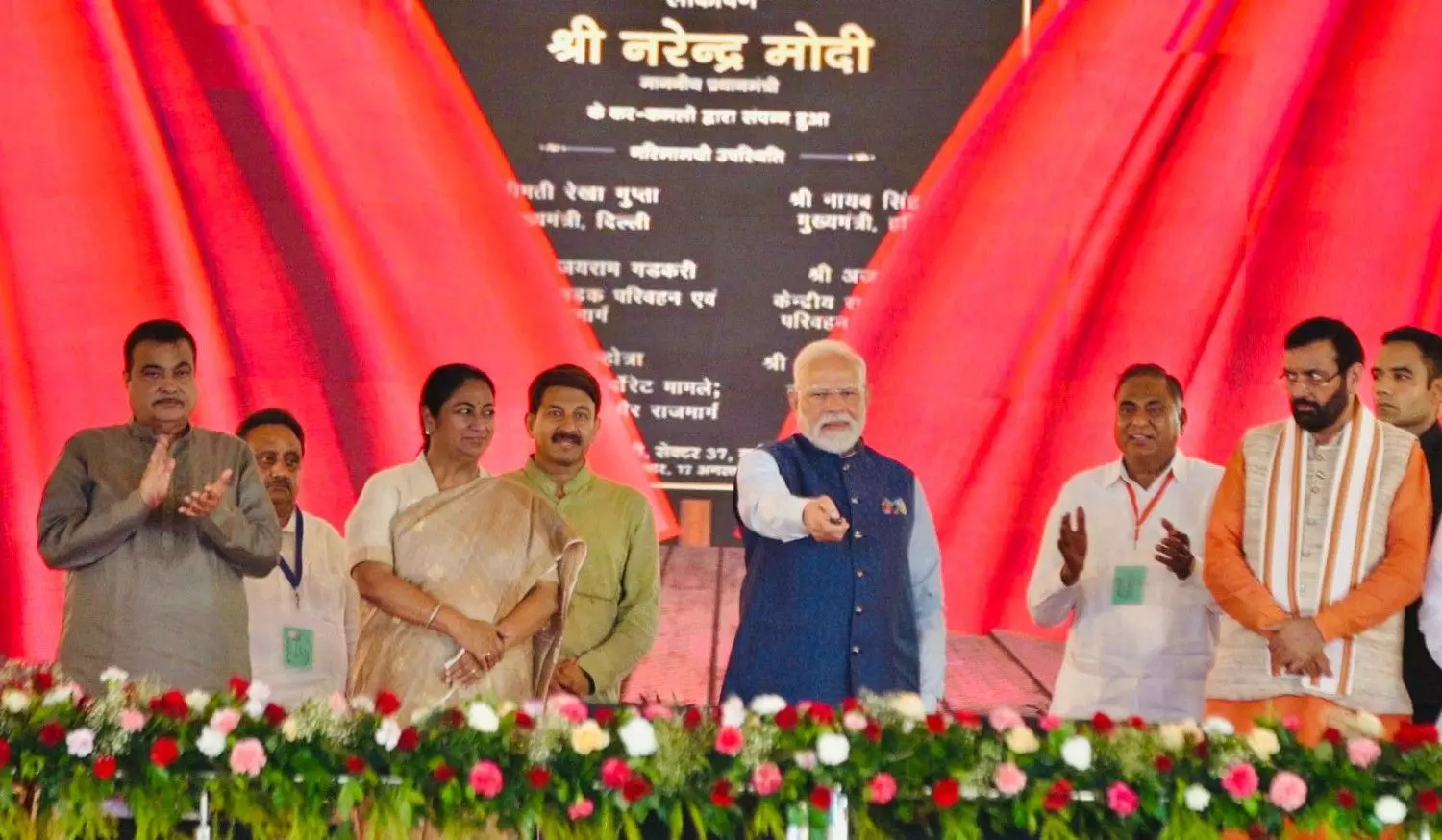
Prime Minister Narendra Modi inaugurates the Dwarka Expressway (Delhi section) and Urban Extension Road-II (UER-2), in Delhi on Sunday (August 17). Photo: X/@nitin_gadkari
How Dwarka Expressway, UER-II help Delhi-NCR, reduce travel time to airport
Union Road Transport and Highways Minister Nitin Gadkari said these two projects will reduce traffic jams in Delhi by 50 per cent

The Delhi section of the Dwarka Expressway and the Urban Extension Road-II (UER-II), both built for Rs 11,000 crore, were inaugurated on Sunday (August 17) by Prime Minister Narendra Modi.
The projects have been developed under the government’s comprehensive plan to decongest the national capital, with the objective of greatly improving connectivity, cutting travel time, and reducing traffic in Delhi and its surrounding areas.
Also read: PM Modi inaugurates Dwarka Expressway, UER-II
“These initiatives reflect Prime Minister Modi’s vision of creating world-class infrastructure that enhances ease of living and ensures seamless mobility,” the Prime Minister’s Office (PMO) said.
How will Delhi section of Dwarka Expressway and UER-II help?
Union Road Transport and Highways Minister Nitin Gadkari said these two projects will reduce traffic jams in Delhi by 50 per cent.
The distance and time to the Delhi airport from Sonipat, Bahadurgarh, Rohtak, and Gurugram will be significantly reduced. An alternative route between Delhi and Gurugram will ease congestion on National Highway 48.
The 10.1 km long Delhi section of Dwarka Expressway has been developed at a cost of around Rs. 5,360 crore.
It features a technically complex and innovation-filled interchange near Shiv Murti. This interchange also connects to the proposed new twin-tube tunnel on National Highway 148AE. This proposed tunnel, approximately 5 km long, will extend from the Shiv Murti interchange to Nelson Mandela Marg and will be constructed at a depth of 20 to 40 meters beneath Delhi’s Southern Bridge.
The section will also provide multi-modal connectivity to Yashobhoomi, DMRC Blue line and Orange line, upcoming Bijwasan railway station and Dwarka cluster Bus Depot.
This section comprises:
Package I: 5.9 km from Shiv Murti intersection to the Road Under Bridge (RUB) at Dwarka Sector-21.
Package II: 4.2 km from Dwarka Sector-21 RUB to the Delhi-Haryana border, providing direct connectivity to Urban Extension Road-II.
The 19 km-long Haryana section of the Dwarka Expressway was earlier inaugurated by the Prime Minister in March 2024.
The Alipur to Dichaon Kalan stretch of Urban Extension Road-II (UER-II), along with new links to Bahadurgarh and Sonipat, was built at a cost of around Rs 5,580 crore.
UER-II is now called Delhi’s ‘new outer ring road’. It will connect Mahipalpur near Delhi’s Indira Gandhi International (IGI) Airport to Alipur in North Delhi.
It will establish better connectivity with National Highway 44 (Delhi-Panipat), National Highway 09 (Delhi-Rohtak), and National Highway 248BB.
This 6-lane road includes several elevated sections, which will reduce traffic in Delhi, Gurugram, Sonipat, and surrounding areas. Revolutionary improvements in connectivity will be seen in areas like Alipur, Narela, Bawana, Rohini, Mundka, Najafgarh, Dwarka, Mahipalpur, West, and South Delhi.
Additionally, Bahadurgarh and Sonipat have also been connected through this. Travel from Chandigarh, Punjab, Jammu and Kashmir to Delhi airport will become smoother. The distance from the Delhi-Haryana Singhu border to the airport, which previously took 2 hours, can now be covered in just 40 minutes.
It will ease traffic on Delhi’s Inner and Outer Ring Roads and busy points like Mukarba Chowk, Dhaula Kuan, and NH-09.
The new spurs will give direct access to Bahadurgarh and Sonipat, improve industrial connectivity, cut city traffic, and speed up goods movement in the NCR.

